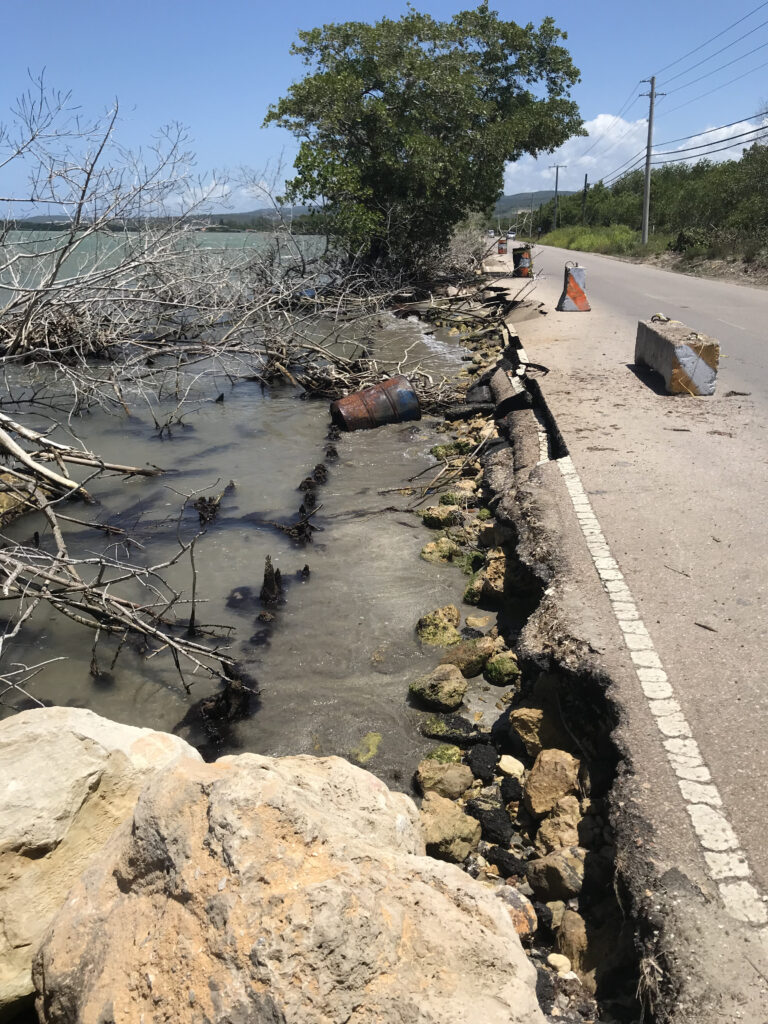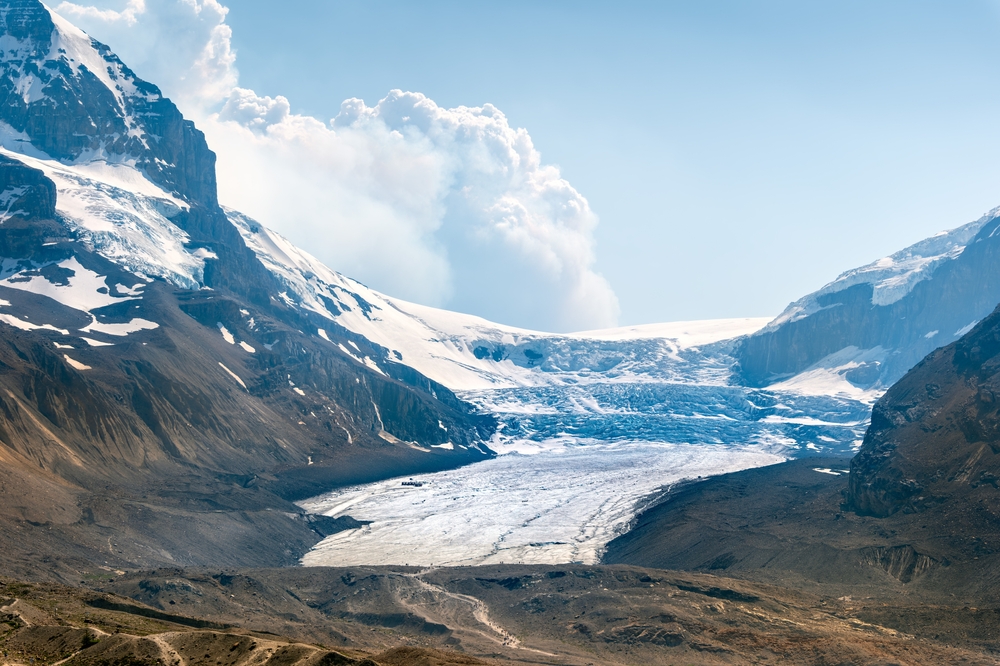We are learning a lot about mangroves and how important they are, both locally and for the planet.
At the local level, mangroves offer protection to shorelines from storms, reducing storm surge and slowing erosion caused by incoming waves, as well as reducing the amount of pollution and silt-laden runoff from reaching coral reefs and seagrass beds offshore. Mangrove roots foster ecosystem biodiversity since they act as breeding, spawning, hatching, and nursing grounds for commercially valuable fish and other species. Mangroves also provide building materials, fuelwood, tannins, medicinal remedies, and food such as Crassostrea brasiliana for traditional or indigenous communities.
And while it’s hard to put a dollar figure on some of the other services mangroves provide, there is tremendous value in their benefits as habitat: egrets, hummingbirds and herons are attracted to mangrove flowers, while the brown pelican and endangered West Indian whistling duck use mangrove forests for food and nesting. Several species of crabs and turtles find refuge in mangrove roots.

At a global level, mangroves are excellent carbon sinks, sequestering up to five times as much carbon as any other type of forest, storing that carbon for millennia. Mangrove forests contribute to sea level rise resilience too: (1) by trapping sediments from tide waters, (2) by increasing soil volume through the addition of organic material (roots and stems), and (3) by increasing the resistance of soils to erosion (Cahoon et al 2020). All of this makes them a great weapon in the fight against climate change.
Threats to Mangrove Forests
Despite the many benefits of mangrove forests, these ecosystems have long faced a range of threats from development pressures. Between 1990 and 2020, the area of mangroves decreased by 1.4 million hectares (10,000 sq km) globally. That’s an area nearly the size of Jamaica (10,990sq km)!
 One of the biggest threats to mangrove forests is deforestation, and the conversion of that space to aquaculture, agriculture, or infrastructure and urban development. The presence of dangerous and undesirable creatures (crocodiles, snake, mosquitoes) could also lead people to conclude that, as Darwin said, mangroves are little more than a source of “putrid exhalations”. Large-scale clearing and drainage of mangrove forests continues today, though it has slowed somewhat in most parts of the world (the Global Mangrove Alliance has an interesting interactive map that shows the extent of mangrove forests around the world).
One of the biggest threats to mangrove forests is deforestation, and the conversion of that space to aquaculture, agriculture, or infrastructure and urban development. The presence of dangerous and undesirable creatures (crocodiles, snake, mosquitoes) could also lead people to conclude that, as Darwin said, mangroves are little more than a source of “putrid exhalations”. Large-scale clearing and drainage of mangrove forests continues today, though it has slowed somewhat in most parts of the world (the Global Mangrove Alliance has an interesting interactive map that shows the extent of mangrove forests around the world).
Pollution is another major threat, and it can come from a wide range of sources including industrial activities, agriculture, and urbanization. Climate change, with its rising temperatures, sea levels, and ocean acidification is likely to have a negative impact on mangrove forests, reducing their ability to store carbon and protect shorelines. The road in the photo to the right was once protected by a thin stand of mangroves, but as their health declined so did their ability to protect the road behind them.

Mangrove forests can also be damaged by natural disturbances such as sea level rise and extreme weather. Some tree species are not able to tolerate an influx of saltwater that typically accompanies storm surge. In a hurricane, damage is typically caused by high winds that defoliate trees, which can lead to high mortality. In the absence of human-induced stressors, forests can recover over time, but when other factors are at play restoration is often needed. The photo to the left is what remains of a once healthy mangrove ecosystem in The Bahamas that was destroyed by Hurricane Dorian in 2019. The pine forests (seen at the back of this photo) were also severely damaged.
Restoring and Protecting Mangroves
Protecting mangrove forests is essential for preserving the many benefits these ecosystems provide. There are a range of strategies that can be used to achieve this, including:
- Conservation: Creating protected areas and enforcing laws to prevent deforestation and other harmful activities.
- Restoration: Restoring degraded mangrove forests through activities such as planting new trees and removing invasive species.
- Sustainable use: Promoting sustainable use of mangrove forests, including sustainable harvesting of timber and other resources, and promoting eco-tourism.
Mangrove restoration and management has been happening for decades. Despite large amounts of funding, however, the long-term survival rates for early efforts were generally low, at 10–20%. Mangroves are very resilient, but they need to have the right conditions to thrive. Survival rates depend on several factors such as selecting the right species, salinity of the target waters, hydrology and drainage characteristics of the area, and selection of the best sites. If the hydrology changes dramatically, their ability to self-regulate can be turned off. So for example if a road is constructed through a mangrove forest and the natural drainage patterns are not maintained, this will often lead to die-off.

Mangrove forests can be restored passively and/or actively. Passive restoration in lightly to moderately degraded sites is possible by removing human-induced stressors. The most damaging stressors – logging and pollution – can only be decreased through management. This generally requires legislative support.
Active restoration of mangroves can occur in existing forests or on unvegetated coasts. In existing forests where the tree density is low, planting saplings can help create denser stands. Existing trees protect seedlings by: (1) decreasing wave action that can tear saplings out of the ground and (2) intercepting wrack (macroalgae and seagrass) that can get tangled on saplings and increase the likelihood of them being pulled out of the ground by tidal flows. Existing forests also tend to have more natural soil nutrient cycles needed for the saplings to take root.
On open coasts, the restoration of mangrove forests needs engineered protection from waves and wrack, along with a supply of nutrients to get trees established. This can be done by building a breakwater that allows sediment to accrete in its lee and serves to blocks waves and wrack. The area behind the breakwater can be planted once the sedimentation rate stabilizes. Once the forest is established, it should naturally stabilize the accreted sediment. Other strategies require anchoring, physical protection, and fertilization of newly planted saplings. These could be specially designed systems ranging from commercial sources to using tires and rebars.
Building Resilience
Mangrove restoration costs vary, from tens of thousands of US dollars per hectare to well over US$100,000/ha. A 2021 analysis of the ecological and economic outcomes of mangrove restoration suggests economic benefits outweigh costs by at least a ~7:1 ratio.
Shoring up mangrove ecosystems is one of the pillars of building resilience. The tools needed for mangrove rehabilitation are already available. Partnerships with stakeholders as well as policy, legal and regulatory frameworks are good first steps but data, technical and financial capacity, and the will to move forward are also needed to make these projects happen.


